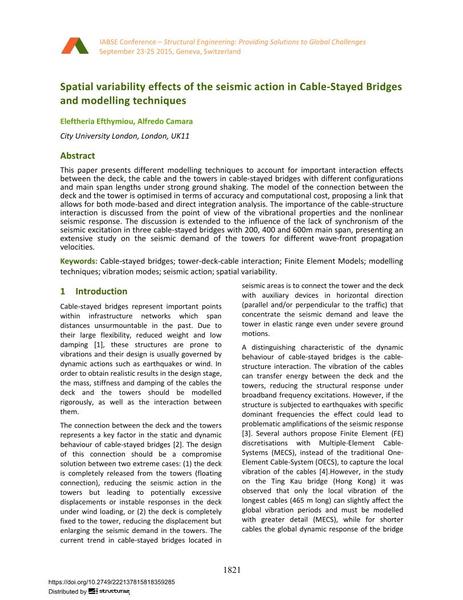Spatial variability effects of the seismic action in Cable-Stayed Bridges and modelling techniques

|
|
|||||||||||
Bibliographic Details
| Author(s): |
Elina Efthymiou
(City University London, London, UK11)
Alfredo Camara (City University London, London, UK11) |
||||
|---|---|---|---|---|---|
| Medium: | conference paper | ||||
| Language(s): | English | ||||
| Conference: | IABSE Conference: Structural Engineering: Providing Solutions to Global Challenges, Geneva, Switzerland, September 2015 | ||||
| Published in: | IABSE Conference Geneva 2015 | ||||
|
|||||
| Page(s): | 1821-1828 | ||||
| Total no. of pages: | 8 | ||||
| Year: | 2015 | ||||
| DOI: | 10.2749/222137815818359285 | ||||
| Abstract: |
This paper presents different modelling techniques to account for important interaction effects between the deck, the cable and the towers in cable-stayed bridges with different configurations and main span lengths under strong ground shaking. The model of the connection between the deck and the tower is optimised in terms of accuracy and computational cost, proposing a link that allows for both mode-based and direct integration analysis. The importance of the cable-structure interaction is discussed from the point of view of the vibrational properties and the nonlinear seismic response. The discussion is extended to the influence of the lack of synchronism of the seismic excitation in three cable-stayed bridges with 200, 400 and 600m main span, presenting an extensive study on the seismic demand of the towers for different wave-front propagation velocities. |
||||
| Keywords: |
cable-stayed bridges vibration modes seismic action finite element model spatial variability tower-deck-cable interaction modelling techniques
|
||||

